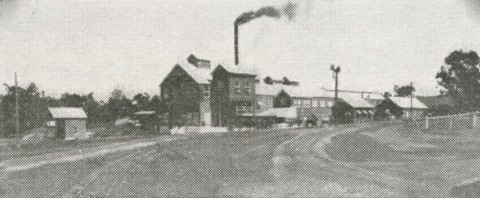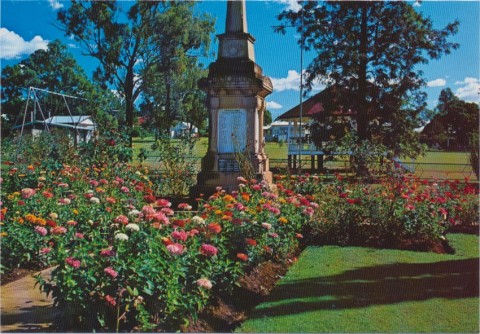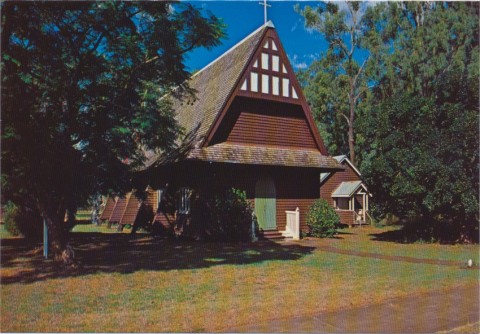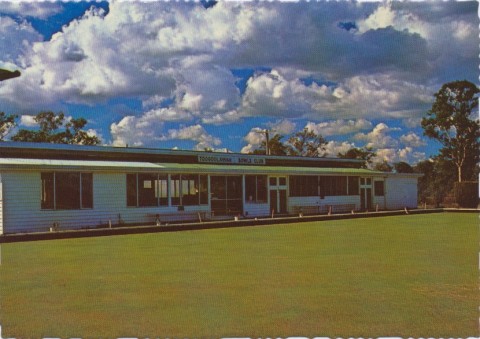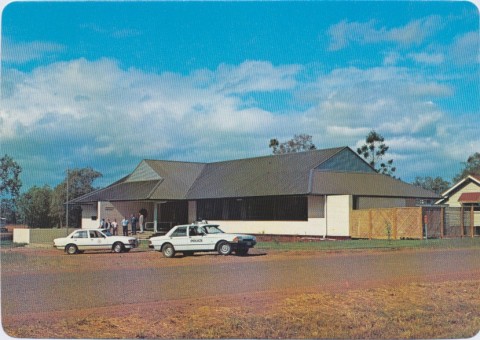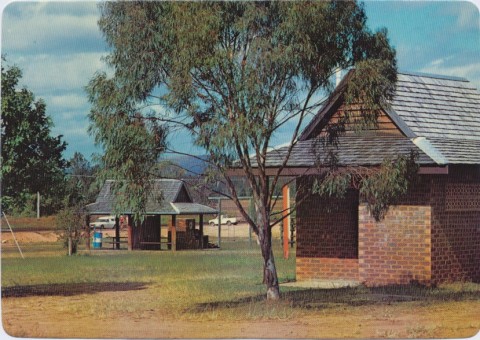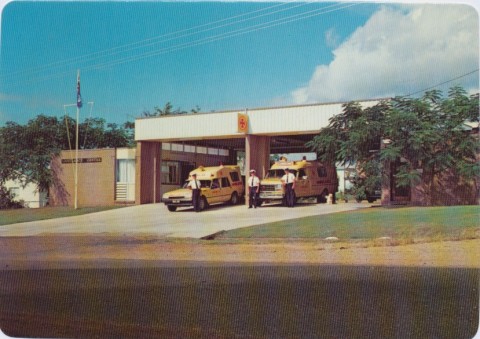Toogoolawah, a rural town in the Brisbane Valley, is 75 km north-west of central Brisbane and about one third further by road.
Situated toward the north of the Brisbane Valley, Toogoolawah is near the Durundur pastoral station established by the Archer brothers in 1841. The station was acquired by the McConnels in 1846, who incorporated it with their Cressbrook estate. The private Cressbrook township was five km north of Toogoolawah.
Upon the railway line from Ipswich reaching Toogoolawah in 1904, a railway township was surveyed and named after the McConnels' property, 'Toogoolawah', at Bulimba which they had left when moving to the Brisbane Valley. Throughout the 1880s there had been resumptions of Cressbrook for closer settlement, and there was a considerable population engaged in dairying and mixed farming when the town was established. The McConnels financed a condensed milk factory at Cressbrook (1898). Later known as the Toogoolawah factory, it was so successful that Nestle and Anglo Swiss was obliged to acquire it to re-enter the Australian market. Nestle's acquisition (1907) was followed by similar acquisitions at Colinton and Lowood, and in 1921 processing was centralised at Toogoolawah, giving Nestle a monopoly over condensed milk in the Brisbane Valley as well as supplying cream to the Esk butter factory.
Toogoolawah's population exceeded 1000 people during the 1920s, and Pugh's Queensland directory (1925) recorded three hotels, the Brisbane Valley Advertiser office, two sawmills, numerous tradespeople and a range of shops and storekeepers. A progress association contributed to the completion of the Alexandra Hall (school of arts) and the reticulation of electricity generated by the Nestle factory. A Rural School (trades and agriculture) was opened in 1928.
Toogoolawah, along with Mount Beppo to the south-east, are good for vegetable growing. Mount Beppo's fertile slopes were cleared of pine scrub, mainly by German settlers, in the 1880s and were ideal for maize and potatoes. In 1947 there were 80 or more potato growers in the Toogoolawah district. The Nestle condensary, however, closed in 1930.
The decline of dairying in the Brisbane Valley in the 1960s was reflected in a loss of the town's population. Steady recovery began in the late 1980s. In addition to the rural/residential lifestyle there are recreational attractions at the Somerset and Wivenhoe Dams; land resumptions for Wivenhoe (1970s) were financially beneficial to dairy farmers, some of whom moved into town, but the resumptions took some of the best agricultural land.
Toogoolawah has a showground, golf, bowls and swimming venues, the Alexandra Hall, several churches, State primary (1905) and high (1988) schools, two hotels and local shops. Cressbrook homestead (dating from a slab-built construction in 1843), east of Toogoolawah on the Brisbane River, is on the Australian heritage register. The precinct comprising McConnel park, with pioneer and war memorials, and the Anglican St Andrew's church, hall and rectory, is listed on the Queensland heritage register. Toogoolawah's census populations have been:
| Census Date | Population |
|---|---|
| 1911 | 845 |
| 1921 | 1096 |
| 1954 | 756 |
| 1986 | 757 |
| 1991 | 864 |
| 2001 | 914 |
| 2006 | 955 |
| 2011 | 1162 |
N.G. Coleman, The early settlement of Toogoolawah Town, Toogoolawah, N.G. Coleman, 1980
Ruth Kerr, Confidence and tradition: a history of the Esk Shire, Esk, Council of the Shire of Esk, 1988
Toogoolawah Centenary 1904-2004, Toogoolawah Chamber of Commerce and Industry, 2004
